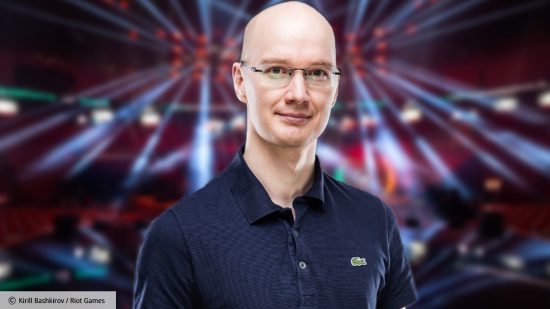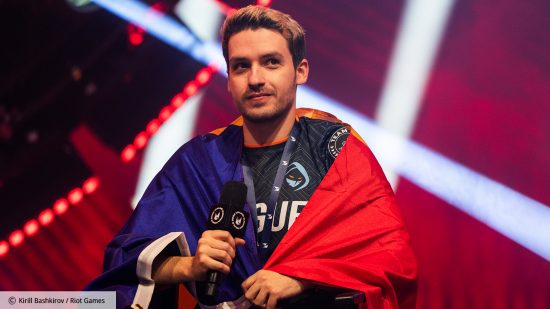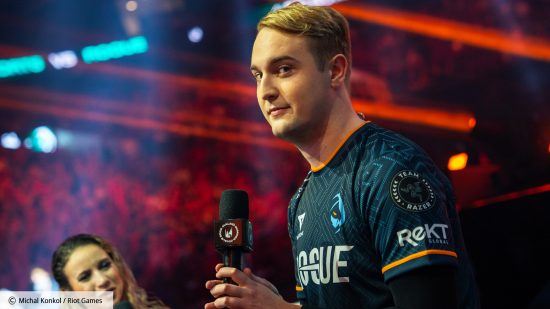League of Legends developer Riot Games recently announced a slew of changes to the structure of the esports division’s EMEA region. Under the new plans, Turkey, CIS, and MENA have all joined forces with EU to become one, united EMEA region. Additionally, with format changes to both Tier-1 and Tier-2 competition, and a shift around of EMEA Regional League accreditation, the beginning of League’s second decade in the region is going to look a whole lot different.
The region’s top competition, the League of Legends EMEA Championship (LEC), has now moved to a whole new, three-split format, that promises more best-of series for top teams. Additionally, with the induction of the Turkish and Arabian Leagues into the ERLs, the online EMEA Masters event now has a fresh new look.

Speaking to The Loadout, director of League esports for EMEA Maximilian Peter Schmidt reveals how long the changes have been in the oven for, his hopes for the new LEC format, solutions to the potential ping problem for EMEA Masters, and his feelings on the loss of the NLC’s ‘accredited’ status.
The Loadout: Max, how have you been? It’s been a hot minute since we last chatted.
Maximilian Peter Schmidt: It’s been good. It’s been an incredibly exciting and busy last couple of months. That being said, I’m very, very happy to have now revealed all those major plans for next year. And also seeing a lot of the positive feedback that we’ve received is obviously very nice to see.
I know the team has been working on this project for such a long time, and now being able to actually openly bring it to the world and our fans is incredibly exciting and exhilarating for all of us. The only thing that gets us more excited is actually looking at the next year, bringing it into action, and then actually getting to see the teams compete again on the LEC stage.
How long has this all been in the works for?
So the entire project was about 20 months as a whole. So it’s pretty been a long, long period of time, because we wanted to be very deliberate about all of our choices. It’s a big League ecosystem, with all the different pieces between the LCL, the TCL, the Arabian League joining the ranks, the EMEA Masters being its own product, as well as, obviously, the LEC sitting on top of it.
We are making a tonne of different changes all at the same time, and we want to make sure that we really do the right thing for our fans and for the ecosystem as a whole. We wanted to ensure that we take all the appropriate time to ensure that we can do that in the best way possible. I think that it’s no surprise that a lot of the recent changes and events throughout this year have also influenced how we thought about certain aspects.
As you said, there are a lot of changes coming in at the same time. If there are things that need to be tweaked down the road, what sort of level of flexibility is there with this new format and structure?
I’d say ultimate flexibility. If this goes completely haywire and we really miss the mark and go against the initial public perception and against our own expectations, and don’t want to watch the new format, they don’t like it, then we will of course also take our conclusions from that and adjust where necessary.
Thinking about the LEC – particularly the bottom end – bottom-tier teams will be playing noticeably fewer games than in the old format. So what was the decision making that went into making a sacrifice at the bottom to give that extra game time to the top end?
So that’s something we discussed in detail together with all ten teams that are partnered with the LEC to ensure that we do what’s best for the league as a whole. And we all really resonated with the thought and process of performing well, and doing well as an organisation being rewarded directly by playing more games and getting more exposure.
The nice flipside of that topic is that we will also see more competition between the top teams, which is always something that the fans are craving a lot, and we want to ensure that we always cater towards the fans’ needs first and foremost.
Is there a general hope that this move might inspire some of the orgs that have perhaps been a little reluctant to invest heavily into their spots to try and push the envelope in the LEC next year?
I definitely think one of the beauties is that it kind of goes both ways. If you are doing very well, you are being rewarded by getting the benefits that we outlined just now. And if you’re not, you have the ability to reset, take a bootcamp, potentially reassess some of the internal roster moves that you can make internally, and think about how you approach the game and the meta at any given time.
We really believe that this will make the league itself more competitive overall, because the people who are currently not performing as well as they themselves expected have the ability to reassess, potentially make tweaks, and then come back stronger in the upcoming split.
Coming back to the format, was this always the final form Riot was aiming for?
There were a lot of different formats and various iterations that we considered before we landed on this. Initially, when we first thought about this, we really wanted to look at our format for the opening of the second decade of League of Legends esports in the region, and really start that with a bang.
There were a lot of different things that were on the table, some of them very, very experimental, some of them even more outlandish or complex than what we’re currently presenting. And we arrived at this format in particular after getting a lot of feedback from the teams, getting feedback from the players via the Player Council, and ensuring that we really put the players and the fans first and forefront of our thinking in delivering the best product possible for them.
Can you offer some of the more outlandish examples of formats that you had been considering?
Not for now. Maybe there’s another piece in there somewhere at some point, and maybe we’ll get to talk about that at a later stage. But for the time being, I think the format is already complex enough, and I don’t want to confuse anybody with any additional thoughts on this.
That’s more than fair enough! At the end of the season we’ve got the LEC Finals Roadshow which sounds incredibly exciting. What more can you tell us about how it might materialise at this point?
Every single year we’re trying to create the best possible roadshow for our fans, and we’re going to iterate and iterate to make that even better. There will hopefully be some positive surprises and delighters for our fans, but there is no stark contrast in what that roadshow will look like compared to 2022, just as much as the 2022 roadshow was a step up from 2019.
So yes, we’re trying to improve and iterate, but there’s no complete material diversion from what we have been doing so far. Malmo was fantastic, I think it was great to see so many people show up and celebrate the sport, and you obviously want to continue that.
Moving onto EMEA Masters, there have been some initial concerns regarding the ping differential between the incoming regions, especially the Arabian League which is slightly further afield. What more can you tell us right now?
So we’ll need to have a mechanism in place that will ensure that the difference between the teams is at an acceptable level. We’re never going to be getting it 100% perfect because the regions are too apart for that, but we assess the limitations together with the competitive operations team.
To prepare for MENA in particular, we have been working together with the tournament organiser to ensure that the team team or teams that will be qualifying for EM will all play from a single location, and that location is within that acceptable range of ping difference.
As an alternative, the team or teams qualifying for EMEA Masters would go to a different country or a different region and play the entire tournament from there to ensure that, from that location, it’s going to be acceptable.
MENA has been the most challenging in that regard simply because of differences of infrastructure, because all the different countries within MENA – depending on where you are – can be a stark difference between actually being ok versus completely unacceptable. So we wanted to make sure that we bridge that gap and we approach it in that order.
My last question is about the NLC, which has just lost its ‘accredited’ status. I’d just like to get your thoughts on the change, and if it has sounded the death knell for the league as the general sentiment is trending towards.
I fully understand that people following the region can be disappointed by the changes that we’re making. I really can only stress that we’re making these changes with the sustainability and the longevity of the league in mind, to ensure that we still have an NLC to enjoy for the upcoming years.
We wanted to ensure that we work together with our partner there in that regard as well to create something that can exist for the foreseeable future, and I understand that it can be disheartening to hear about this not being as successful as the public perception has been, because I think our partner’s done a fantastic job this year in creating an incredible product.
But, that obviously came with a lot of investment and there was a lot of people power behind that, and I don’t have a crystal ball so I can’t exactly say what the future of the NLC is, but I think it’s by no means a death sentence – a lot of non-accredited ERLs already exist and some of them are doing very, very well.
The NLC has also shown that, when it comes to competitive success, it has been slowly ramping up over the last couple of years. So we have to see how it looks now with the new structure for 2023, but I remain optimistic that it can bounce back and that it can centre itself as one of the stronger, if not the strongest non-accredited ERL that we have.


